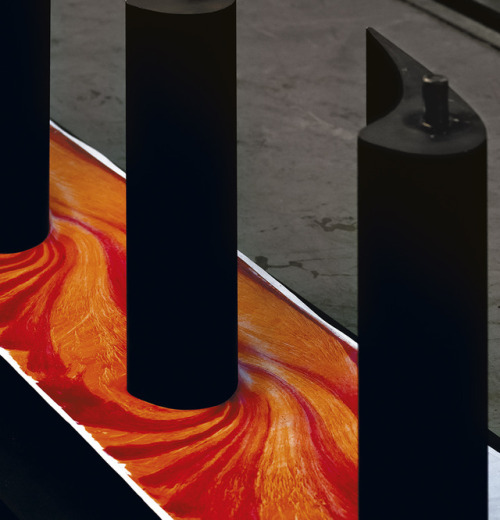Capacitance in physical systems often evokes a range of interpretations, largely rooted in its fundamental association with electrical circuits. However, a deeper investigation reveals the complexities inherent in fluid flows that echo principles of capacitance. Within this framework, the nuances of fluid dynamics might unveil unexpected relationships, suggesting that the understanding of capacitance can provide enlightening insights into the behavior of fluids. This article aims to explore the intersection of capacitance and fluid flows, addressing common observations while hinting at a more profound fascination with these complex systems.
To comprehend the synergy between capacitance and fluid dynamics, we must first consider the fundamental concepts underpinning capacitance. Capacitance, in the realm of physics, is defined as the ability of a system to store electric charge. This capacity can manifest in various configurations, typically observed in capacitors where electric fields interact with dielectric materials. Notably, capacitance is influenced by geometrical factors, such as surface area and distance between plates, as well as the dielectric constant of the material intervening between them. This foundational understanding sets the stage for drawing analogies with fluid flows.
Fluid dynamics, governed by the Navier-Stokes equations, delineate the motion of viscous fluid substances. The behavior of fluids can be characterized by parameters such as velocity, pressure, density, and viscosity. Here, the first noteworthy observation appears; just as capacitors are sensitive to the arrangement and properties of materials, fluid flows exhibit remarkable sensitivity to conditions such as boundary layers and fluid properties. The exploration of this relationship generates intrigue about the principles common to both phenomena.
When contemplating fluid flows through constricted spaces or around obstructions, one can draw parallels to capacitive behavior. For instance, consider the fluid flow through a narrowed channel: as the cross-sectional area diminishes, the fluid accelerates, aligning with Bernoulli’s principle. This acceleration can be perceived as a storage mechanism, akin to the storing of charge in a capacitor, where energy is conserved and converted as the fluid flows. The implications of these behaviors are multifaceted and merit further inquiry. What mechanisms govern this energy transformation in fluids? In what ways can capacitance principles assist in predicting flow behaviors in diverse contexts?
Delving deeper, the phenomenon of hysteresis emerges as a fascinating aspect of fluid mechanics, akin to feedback loops in capacitive circuits. Hysteresis in fluid flows often manifests in the creation of vortices and eddies, particularly in turbulent regimes. The delayed response of a system to changes in input—much like the time-dependent charge and discharge of a capacitor—invites contemplation of the chaotic yet structured nature of fluid mechanics. The observation of hysteretic behavior leads to inquiries regarding the time-dependent attributes of flows and capacitance, provoking questions about system stability and resilience.
Moreover, the concept of effective capacitance in composite systems offers a compelling exploration into how individual components contribute to overall behavior within fluidic systems. In a similar fashion to capacitors in parallel and series configurations, multiple fluid pathways can aggregate in complex architectures, leading to emergent properties that elude straightforward analytical characterization. Understanding the interplay of these configurations could illuminate novel applications in various domains, from nanotechnology to environmental science and engineering.
Another reflection worth exploring is the role of capacitance in understanding flow resistance. Just as effective capacitance can elucidate the behavior of electrical circuits, it can also inform our understanding of fluid resistance and losses. By analyzing the energy dissipation in flows through networks of channels or porous media, we gain insight into the factors affecting flow efficiency. Therein lies a substantial question: can capacitance-based analyses effectively predict flow resistance in varying conditions? This intersection of disciplines creates tremendous potential for innovative research and practical applications.
Furthermore, the scalability of capacitance principles resonates with fluid flows that exhibit self-similar behavior across different length scales. This fractal-like characteristic is prevalent in various natural systems, from river networks to atmospheric flows. The confluence of these ideas raises the possibility of developing universal models that unite concepts of electrical capacitance with hydraulic theories. It prompts a profound curiosity: could an analogous framework unify disparate scientific domains, extending our comprehension of both electrochemical systems and hydrodynamics?
Contemplating the real-world implications of relating capacitance to fluid flows, we must reflect on modern technological advancements. The integration of capacitive components in microfluidic devices presents a unique opportunity for controlled fluid manipulation, leading to innovations in medical diagnostics, chemical analysis, and more. The interplay of capacitance and fluid dynamics can enhance the efficacy of these systems, paving the way for breakthroughs that could reshape industries. The realization of this synergy embodies a convergence of theoretical inquiry and practical execution, echoing through engineering disciplines.
In conclusion, the exploration of capacitance within the context of fluid flows reveals a rich tapestry of interactions that are worthy of further investigation. The common observations within both realms, coupled with the complex underlying principles, beckon researchers to unravel the deeper reasons behind the fascination with fluid dynamics. As we continue to probe the interconnections between these fields, the potential for discoveries that enhance both scientific understanding and technological applications remains boundless, urging us to advance towards an ever-elusive holistic comprehension of the physical world.








